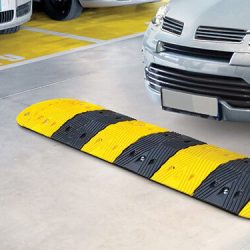Speed bumps and humps are common traffic calming measures used on roads to regulate vehicle speed and enhance safety for pedestrians and drivers alike. These physical features are strategically placed to slow down vehicles and reduce the risk of accidents in areas where speed control is crucial.
Types of Speed Bumps and Humps
- Speed Bumps:
- Advantages: Effectively reduce vehicle speed, cost-effective.
- Disadvantages: Can cause discomfort to passengers and damage to vehicles if not approached carefully.
- Speed Humps:
- Advantages: Gradual elevation, smoother ride compared to speed bumps.
- Disadvantages: May not slow down vehicles as effectively as speed bumps, higher installation costs.
Effectiveness of Speed Bumps and Humps
Speed bumps and humps play a crucial role in reducing vehicle speed and enhancing road safety. They effectively slow down vehicles, especially in areas where speed control is necessary.
According to a study conducted by the National Highway Traffic Safety Administration, speed bumps can reduce vehicle speeds by up to 50%. This significant decrease in speed helps prevent accidents and protects pedestrians.
For instance, in a residential neighborhood in City X, the installation of speed humps led to a noticeable reduction in speeding incidents. Residents reported feeling safer, and the number of accidents decreased, showcasing the practical effectiveness of speed humps in real-life scenarios.
Installation and Maintenance
Proper installation of speed bumps and humps is essential to ensure their effectiveness in controlling vehicle speed. The process involves assessing the area, determining the appropriate type of speed deterrent, and following specific guidelines for placement.
For maintenance, regular inspection is key to prolonging the life of speed bumps and humps. Here are some tips to maintain their effectiveness:
- Inspect for any signs of wear and tear regularly.
- Repair any damages promptly to prevent further deterioration.
- Keep the surrounding area clean and free from debris to maintain visibility.
| Strategy |
Frequency |
| Visual Inspection |
Weekly |
| Repainting |
Annually |
| Repair Works |
As needed |
Common Misconceptions
Despite their importance in road safety, speed bumps and humps are often subject to misconceptions. Let’s address some common myths:
- Myth: Speed bumps and humps damage vehicles.
- Fact: When properly designed and maintained, speed bumps and humps pose no harm to vehicles.
- FAQ: Do speed bumps slow down emergency vehicles?
- Answer: While speed bumps may reduce the speed of emergency vehicles, they are designed to prioritize overall road safety.
Pull Quote: “Misconceptions about speed bumps can hinder their effectiveness in promoting safer driving habits.”
Conclusion
In conclusion, speed bumps and humps play a vital role in enhancing road safety through the reduction of vehicle speeds. We explored the different types, effectiveness, installation, and maintenance of these traffic calming measures.
It is evident that speed bumps and humps are crucial in preventing accidents and creating safer road environments for both pedestrians and drivers.
Remember, obeying speed limits and respecting traffic calming devices can save lives and prevent injuries. Let’s all contribute to safer roads by acknowledging the significance of speed bumps and humps.
Stay safe, drive responsibly!

